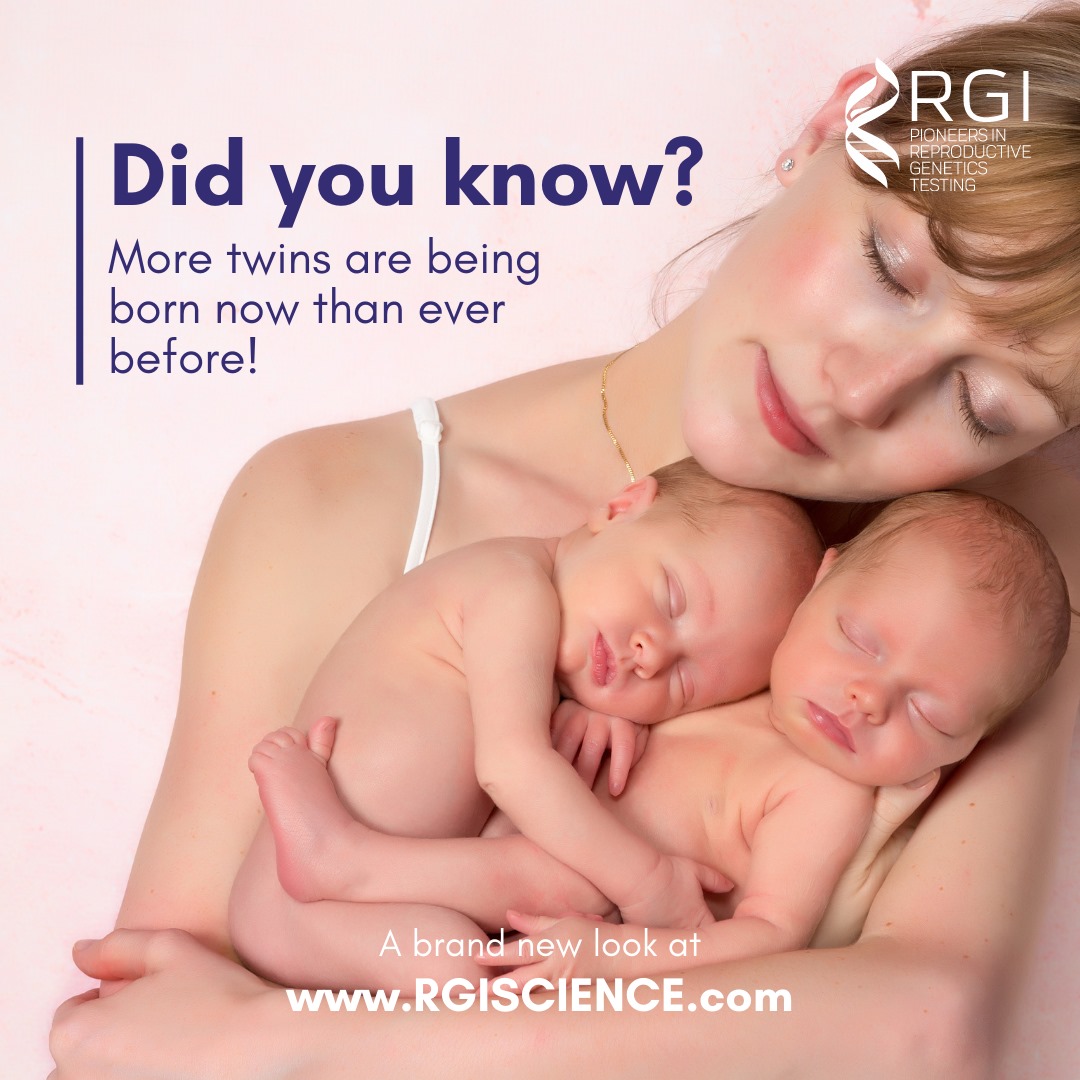Reproductive Genetic Innovations (RGI) recommends Single Euploid Embryo Transfer after Preimplantation Genetic Testing for Aneuploidy (PGT-A)
The United States Centers for Disease Control and Prevention (CDC) states that double embryo transfer (DET) in ART results in a 27% twin rate, whereas single embryo transfer (SET) results in only a 1% twin rate (CDC; https://www.Babies-handout-1_508tagged.pdf). Transferring multiple embryos was once considered necessary to achieve an acceptable pregnancy rate, and logical because for decades it was not possible to select a single normal euploid embryo for transfer. The underlying problem was that in a six-day morphologically normal embryo, one could not distinguish between a euploid (chromosomally normal) embryo and an aneuploid (chromosomally abnormal) embryo. During that era it was not unreasonable to transfer more than one embryo. However, sometimes more than one untested embryo was euploid, resulting in multiple gestations and twins.
Now we have a better solution. RGI recommends Preimplantation Genetic Testing for aneuploidy (PGT-A). Biopsy of a 5-6 day blastocyst can be performed before or after cryopreservation . PGT-A will reveal the chromosomal status of each embryo, allowing a single euploid embryo to be selected. The predictive value of transferring a PGT-A verified euploid embryo is very high, 10-fold greater than transferring an aneuploid embryo, (41% vs 4%) (Scott et al., Fertil Steril 97:870-875, 2012).To our knowledge, no embryo diagnosed as euploid resulted into an aneuploid miscarriage or gestation.
In randomized clinical trials (RCTs) PGT-A with transfer of a single euploid embryo has been shown to improve pregnancy rates. Pregnancy rates with a euploid transfer are 15-20% greater than with transferring an untested embryo, with the optimal age group maternal ages 35-40 years. Pregnancy rates and twin rates have also been shown to be exemplary in a RCT comparing outcome when a single euploid embryo is transferred vs outcome when two untested but morphologically normal embryos are transferred. Pregnancy rates were 61 and 65%, respectively. However, twin rates were strikingly different (zero vs 51%) (Forman et al., Fertil Steril. 100:100-107, 2013). Therefore, twin rates in ART can unequivocally be reduced.
Conclusion. Reducing twin rates in ART is best accomplished by selecting and transferring a single euploid embryo by PGT-A.
Written By: Dr. Joe Leigh Simpson
This article is written in response to RGI’s social media post on April 7th 2021: “According to the first global study on human twinning, the number of twins being born is now at its highest ever level, thanks to tech advances in IVF. A whopping 1.6 million twins are born each year worldwide since the 1980s. Read more at https://zcu.io/nrGA”


Thank you for this interesting article! Very useful information.
Verification: VRFB06A4443